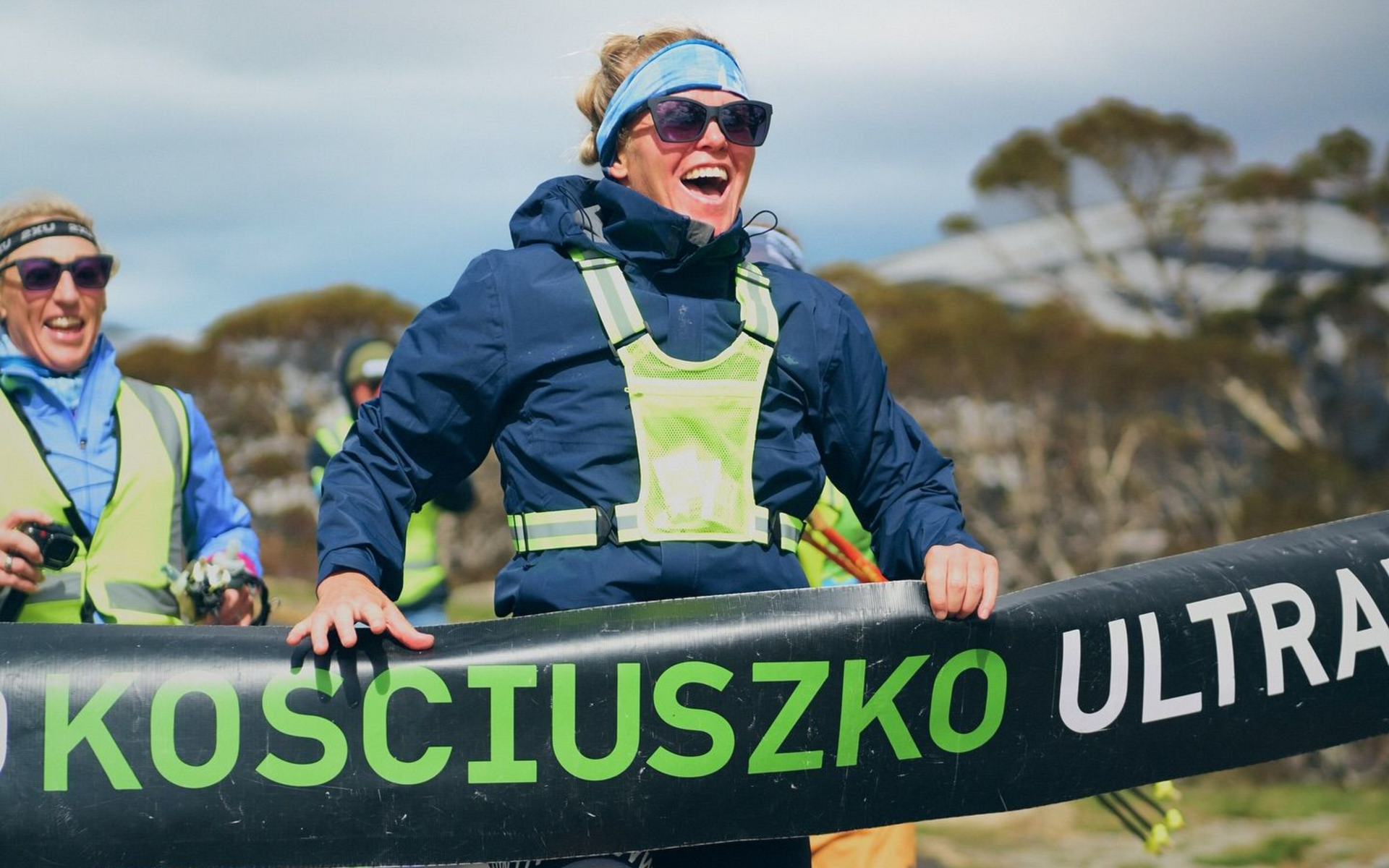
COACH’S CORNER - Here for the Women’s race by Dr Kellie Angel
today, more women than ever are staying active while pregnant, and Dr Kellie Angel provides advice on whether or not you should keep running.

There was a time when it was frowned upon for women to run. Whilst there are odd tales of female runners and races as early as 776 BC, these were few and far between. It wasn’t until Kathrine Switzer’s infamous 1967 Boston Marathon that times began to change.
Fast forward 60 years and no one thinks twice about seeing women running. However, while gender equality has increased, race participation rates remain significantly imbalanced, particularly as races get longer, indicating that there are still many barriers to women making it to the start line. Factors highlighted by advocacy group She.Races include things such as strict cut-off times, unequal coverage (if you can’t see it, you can’t be it), inappropriate provisions, uncertain logistics, and the big one – a lack of pregnancy deferrals.
With lottery entries, qualification race requirements, time restrictions, and generally just training for trail and ultra, races are complicated enough without a baby in your belly. Women shouldn’t have to make tough decisions about whether to forego their dream race, or run it unsafely because of a business rule that is likely just an administration complexity.
In 2018, Western States Endurance Run introduced a pregnancy deferral policy. This might only be six years ago, but it was progressive for its time, and it remains somewhat so, with no time restrictions on how long you can defer.
In the same year (2018), UTMB had no pregnancy deferral option, resulting in the famous photo of British runner Sophie Power pumping and breastfeeding her 3 month old at Courmayeur, half way through the iconic 106 mile race. This photo, taken by Alexis Berg, was the catalyst for some significant changes in the running world (both road and trail) and Sophie has become a powerful advocate for women runners across the globe. In the past couple of years she has influenced the World Majors to introduce deferral policies and worked with the women’s equality committee of the Pro Trail Runners Association (PTRA) to achieve a five year pregnancy deferral policy for the UTMB World Series.
In 2024 women have more options and opportunities in spite of planning for children, being pregnant, or post-partum, but how do they know what’s safe and appropriate to do? You are given so much conflicting information as new parents, being an athlete can add a whole other layer of complexity. How do women set goals without knowing timeframes, without knowing how their bodies will respond to childbirth or how they will cope as new mums? Where do they find reliable, evidence-based information to support their participation? Being a runner can be a huge part of one’s identity, and it’s important that we can find the right information to retain that identity alongside that of ‘mum.’ And hot tip: it’s not usually from the latest elite on Instagram.
Can women run through pregnancy?
Absolutely, if you were already a runner and perhaps not planning on running your first ultra with a bun on the oven. But everyone is different. Some will choose to stop right away, whilst others may run all the way until full term. Some factors that need to be considered: pelvic floor strength, Relaxin and its impact on ligaments (particularly when trail running!), increased resting heart rate, weight gain, fatigue, changes in blood pressure, changes in centre of gravity, and risk of falls. It is important for women to do their homework, speak with their treating clinicians and listen to their body. Many will find that their activities will naturally progress to less running and more cross training as they get closer to term.
Where to get the best advice:
- Your GP
- Your obstetrician
- Your coach – though be mindful of their level of education in women’s health
- Australian Institute of Sport
- Pelvic Floor Health
- Sports Medicine Australia 1
- Sports Medicine Australia 2
How quickly should women return to running?
Every mother is different and so too is their journey back to running. It is great to resume low impact aerobic exercise and strength work when safe to do so, but return to high impact exercises such as running (and trail running) demands more caution. Women’s health practitioners should be familiar with the Return to Running post-natal guidelines, which offer a guided, evidence-based approach to the resumption of running.
A couch to 5km program from 12 weeks post-partum is a good place to start, as long as all the other boxes have been ticked and there are no other risk factors. Some considerations include: mode of delivery (caesarean versus vaginal birth), pelvic floor strength including continence and pelvic organ prolapse, breastfeeding status and breast support, diastasis recti (abdominal separation), sleep and psychological factors.
Ensure your team is well educated and be wary of the local PT sprucing new mum’s programs without doing your research- if they’re prescribing planks and tuck jumps you're probably in the wrong place. In the moment it can seem like such a slow resumption of the thing you love, but it truly is such a small slice in time. Patience will yield the best results.
Where to get the best advice:
- Your GP
- Your Obstetrician
- Your coach - though be mindful of their level of education in women’s health and have open conversations about this.
- Your Women’s health physiotherapist (if you don’t have one, find one now!)
- Return to running post-natal guidelines, Researchgate
- Australian Institute of Sport: Pelvic Floor Health, Breastfeeding
- Sports Medicine Australia
- Appropriate ‘Couch to 5km’ style program
Whilst we’ve still got a long way to go, the next generation of female runners is so exciting. Mum runners have a whole new level of strength and endurance and they deserve the chance to show it off, without unnecessary rush or risk to their health and safety. We have so many amazing role models here in Australia and we need to keep pushing forward for equality. The PTRA had 500 t-shirts made and launched at Western States- they sold out in two days.
We’re here for the women’s race and it looks like everyone else is too!
References
Goom, Tom & Donnelly, Grainne & Brockwell, Emma. (2019). Returning to running postnatal – guidelines for medical, health and fitness professionals managing this population. 10.13140/RG.2.2.35256.90880/2.
Australian Institute of Sport, Female Performance & Health Initiative, from:
https://www.ais.gov.au/fphi
Sports Medicine Australia, from:
https://sma.org.au/
She.Races, from:
https://www.sheraces.com/
Runners World: A History of Women’s Running, from:
https://www.runnersworld.com/uk/training/motivation/a26748147/a-history-of-womens-running/









